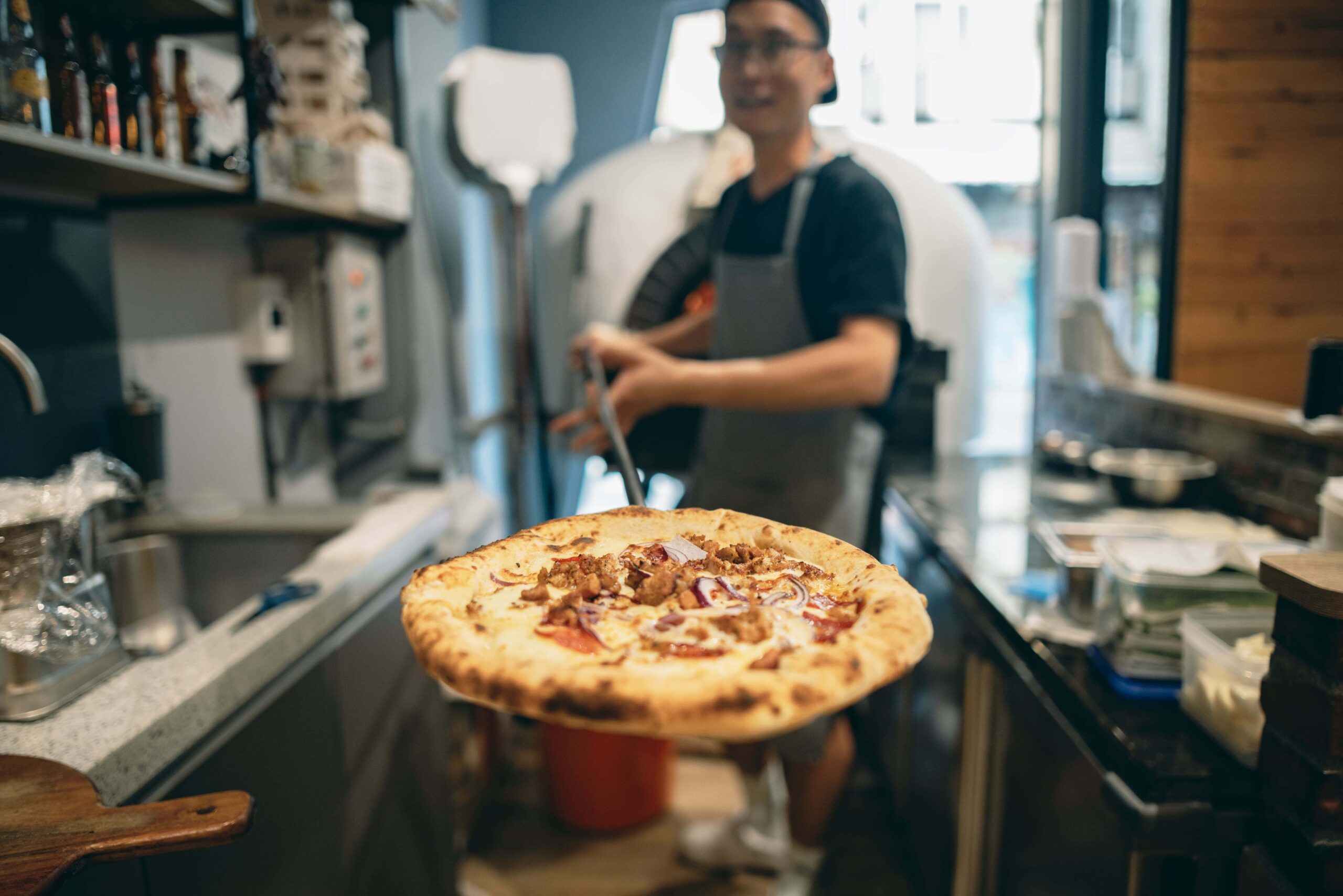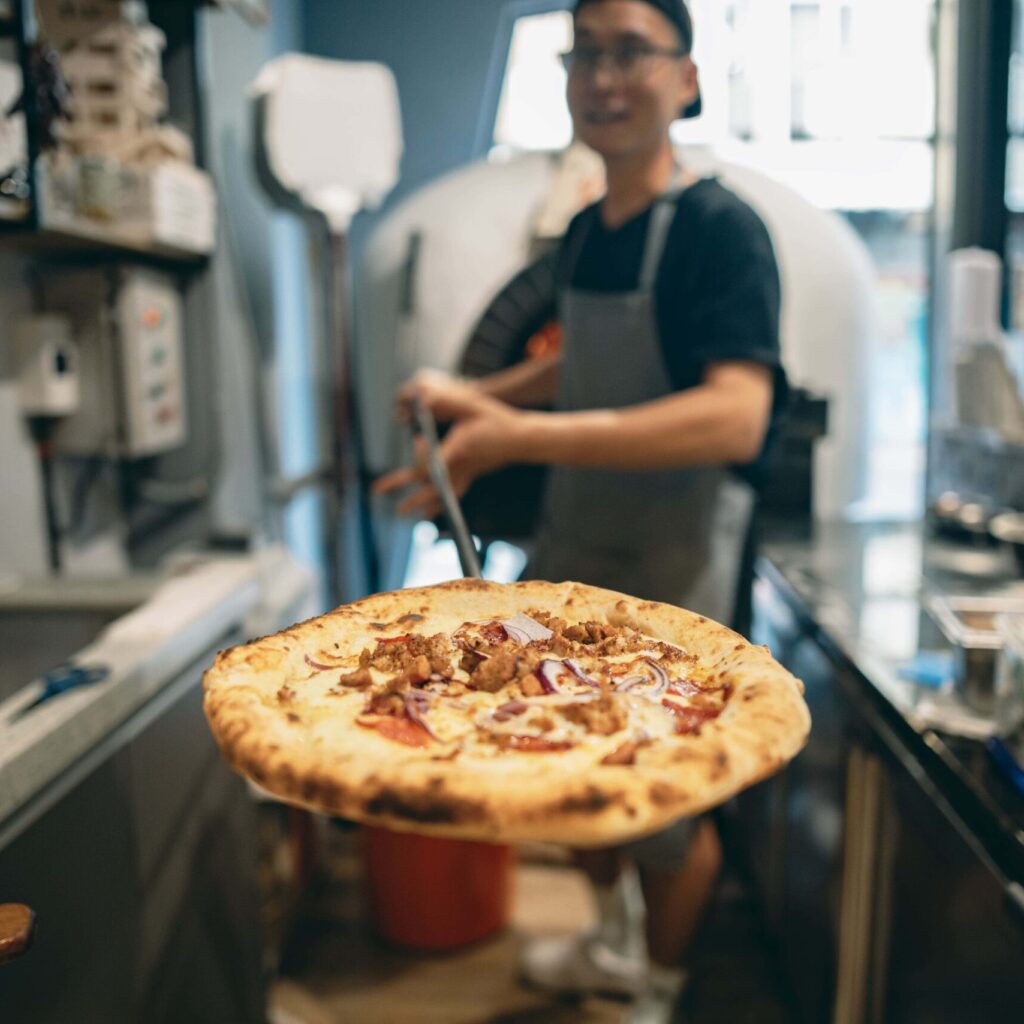Effective scheduling serves as the backbone of any successful pizzeria operation in Chicago. In a city renowned for its distinctive pizza culture, from deep dish to tavern-style thin crust, managing staff efficiently is critical to maintaining quality, service, and profitability. Chicago pizzerias face unique scheduling challenges due to the city’s fluctuating tourist seasons, extreme weather conditions, diverse neighborhood dynamics, and vibrant event calendar that can dramatically impact customer demand. Additionally, navigating the complex web of Chicago-specific labor regulations while optimizing staffing levels requires sophisticated scheduling approaches that balance business needs with employee satisfaction.
The right scheduling solution can transform operations for small pizzeria businesses, reducing labor costs by up to 5% while improving employee retention and customer satisfaction. Modern scheduling systems have evolved beyond simple calendar applications to become comprehensive workforce management tools that address the specific needs of food service operations. For Chicago pizzerias competing in a crowded market where customer expectations are high and margins are tight, implementing effective scheduling practices isn’t just an operational necessity—it’s a strategic advantage that directly impacts the bottom line.
Understanding the Chicago Pizzeria Scheduling Landscape
Chicago’s pizzerias operate in a unique business environment with distinct challenges that directly impact scheduling needs. The city’s extreme seasonal fluctuations, from bustling summer tourism to harsh winter weather that affects foot traffic, create significant demand variability throughout the year. Additionally, Chicago’s 77 neighborhoods each have their own peak business hours and customer demographics, requiring location-specific scheduling approaches. Understanding these factors is essential for creating effective staffing plans that maximize efficiency while maintaining service quality.
- Seasonal Demand Fluctuations: Summer months typically see increased tourism and outdoor dining, requiring up to 30% more staff, while winter weather can reduce walk-in traffic significantly.
- Neighborhood Dynamics: Business districts require lunch rush coverage, while residential areas see evening and weekend peaks.
- Event-Driven Demand: Chicago’s sporting events, festivals, and conventions create predictable but intense demand spikes that require flexible staffing solutions.
- Late-Night Service Challenges: Many Chicago pizzerias offer extended late-night hours, particularly in entertainment districts, creating unique scheduling requirements for these off-peak shifts.
- Multi-Role Staff Management: Small pizzerias often require employees to perform multiple roles, from prep to service to delivery, complicating scheduling processes.
Pizzeria owners who recognize these factors can develop more effective scheduling strategies. Rather than using outdated methods like paper schedules or basic spreadsheets, employee scheduling software designed for the restaurant industry can help manage these complexities while providing flexibility for both management and staff. Understanding your specific business patterns is the foundation for implementing any successful scheduling system.
Key Benefits of Modern Scheduling Systems for Chicago Pizzerias
Implementing a modern scheduling system can transform operations for Chicago pizzerias, offering significant improvements over traditional methods. The right scheduling solution addresses multiple business challenges simultaneously, from controlling labor costs to improving employee satisfaction. For small pizzeria operators juggling multiple responsibilities, the time savings alone often justify the investment in scheduling technology.
- Labor Cost Optimization: Advanced scheduling tools like Shyft can reduce labor costs by 3-5% through better matching staffing levels to demand patterns.
- Time Savings for Management: Automated scheduling reduces administrative time by up to 75%, allowing managers to focus on customer service and food quality.
- Improved Staff Satisfaction: Self-service scheduling options and shift trading capabilities give employees more control over their work-life balance.
- Reduced No-Shows and Tardiness: Automated reminders and clear communication channels decrease schedule-related absences by up to 20%.
- Better Compliance Management: Integrated compliance features help navigate Chicago’s Fair Workweek Ordinance and other labor regulations.
- Data-Driven Decision Making: Analytics tools provide insights into staffing efficiency and help forecast future needs based on historical patterns.
These benefits directly impact a pizzeria’s bottom line while also improving operational efficiency. For example, scheduling impact on business performance is substantial, with properly staffed shifts leading to faster service times, better customer experiences, and increased repeat business. Chicago pizzerias that implement modern scheduling solutions often report payback periods of less than six months on their software investment.
Essential Features of Scheduling Software for Pizzerias
When selecting scheduling software for your Chicago pizzeria, certain features are particularly valuable for addressing the unique challenges of food service operations. The right combination of functionality can dramatically improve both operational efficiency and staff satisfaction. Consider which features align with your specific business needs and growth plans.
- Mobile Accessibility: Staff should be able to view schedules, request time off, and trade shifts from their smartphones, increasing engagement and reducing communication gaps.
- Shift Marketplace Functionality: Shift marketplace features allow employees to trade or pick up shifts with manager oversight, resolving coverage issues without management intervention.
- Demand Forecasting: Integration with POS data to predict busy periods based on historical sales, helping optimize staffing levels for different shifts.
- Skill-Based Scheduling: The ability to assign shifts based on employee skills (pizza making, oven management, delivery, etc.) ensures proper coverage for all necessary roles.
- Real-Time Communication Tools: Team communication features keep staff informed about schedule changes, special events, or menu updates.
- Compliance Management: Automatic flagging of potential regulatory issues, such as overtime thresholds or required break periods under Chicago labor laws.
For pizzerias with delivery services, GPS integration and route optimization can further enhance scheduling efficiency. When evaluating options, consider how each feature addresses your specific pain points. For instance, many Chicago pizzeria owners report that shift swapping mechanisms significantly reduce their involvement in schedule adjustments, freeing up several hours each week for other management responsibilities.
Chicago-Specific Labor Compliance Considerations
Chicago pizzeria operators must navigate a complex regulatory environment that impacts scheduling practices. The city’s labor laws go beyond state and federal requirements, creating additional compliance challenges that scheduling software can help address. Understanding these regulations is essential for avoiding costly penalties and maintaining positive relationships with your workforce.
- Chicago Fair Workweek Ordinance: Requires employers, including many food service businesses, to provide workers with advance notice of schedules (typically 10 days) and compensation for last-minute changes.
- Predictive Scheduling Requirements: Predictive scheduling practices are increasingly mandated, requiring systems that can generate and distribute schedules well in advance.
- Break Compliance: Illinois law requires meal breaks for shifts exceeding 7.5 hours, which must be properly scheduled and documented.
- Minor Work Restrictions: Special scheduling considerations for employees under 16, including hour restrictions and prohibited work during school hours.
- Overtime Management: Proper tracking of hours to manage overtime costs while ensuring compliance with premium pay requirements.
Modern scheduling software can automate compliance management by flagging potential violations before schedules are published. This proactive approach to compliance with labor laws helps prevent costly penalties and legal issues. Additionally, maintaining digital records of schedules, changes, and employee acknowledgments creates an audit trail that can be invaluable if compliance questions arise.
Managing Peak Hours and Seasonal Demand in Chicago
Chicago’s distinct seasons and vibrant event calendar create significant variability in pizzeria demand throughout the year. Effective scheduling requires strategies to address both predictable patterns and unexpected fluctuations. Leveraging data and flexible staffing approaches can help maintain service quality while controlling labor costs during both peak and slow periods.
- Chicago-Specific Demand Drivers: Schedule additional staff during major events like Lollapalooza, Taste of Chicago, major sporting events, and conventions that bring crowds to specific neighborhoods.
- Weather-Based Adjustments: Implement flexible scheduling during winter months when severe weather can unexpectedly impact both customer traffic and staff ability to commute.
- Staggered Shift Starts: Rather than having all staff start simultaneously, stagger arrival times to match typical order flow patterns, particularly for weekend dinner rushes.
- Core Staff Plus Flex Teams: Maintain a core team supplemented by part-time staff who can be scheduled for peak periods or called in when demand spikes unexpectedly.
- Cross-Training Implementation: Cross-training for schedule flexibility allows team members to fill multiple roles as needed, adding valuable adaptability during busy periods.
Advanced scheduling systems can analyze historical data to predict busy periods and suggest appropriate staffing levels. For example, seasonal staffing strategies might include creating special summer schedules that accommodate increased tourist traffic or winter schedules that focus more on delivery capabilities. These data-driven approaches help pizzeria owners maintain service quality while optimizing labor costs throughout Chicago’s variable business cycles.
Enhancing Staff Satisfaction and Retention Through Effective Scheduling
In Chicago’s competitive restaurant labor market, employee satisfaction and retention are increasingly linked to scheduling practices. The traditional high-turnover model is giving way to approaches that respect work-life balance and employee preferences. Modern scheduling systems offer features that can significantly improve staff satisfaction while still meeting business needs.
- Preference-Based Scheduling: Collect and honor employee availability and preferences when creating schedules, increasing satisfaction and reducing no-shows.
- Schedule Fairness: Distribute desirable and less-desirable shifts equitably among staff to avoid perceptions of favoritism.
- Advance Notice: Provide schedules further in advance than legally required, allowing employees to better plan their personal lives.
- Self-Service Options: Enable staff to request time off, swap shifts, or pick up additional hours through mobile apps, increasing their sense of control.
- Work-Life Balance Considerations: How to improve work-life balance through scheduling practices like avoiding “clopening” shifts (closing late and opening early) and respecting time-off requests.
Research shows that schedule flexibility employee retention are directly correlated, with flexible scheduling policies reducing turnover by up to 20%. In an industry where replacement costs can exceed $5,000 per employee, investing in scheduling systems that improve satisfaction offers significant ROI. Additionally, employees who feel their time is respected tend to provide better customer service, directly impacting your pizzeria’s reputation and repeat business.
Implementation Strategies for Scheduling Systems
Successfully implementing a new scheduling system requires careful planning and change management. Many Chicago pizzeria owners have found that a phased approach works best, allowing staff to gradually adapt to new processes while minimizing operational disruption. The following strategies can help ensure a smooth transition to modern scheduling practices.
- Needs Assessment: Begin by identifying your specific scheduling pain points and must-have features before selecting a system.
- Staff Involvement: Include key employees in the selection process to increase buy-in and gather valuable input on usability.
- Phased Rollout: Start with basic scheduling functions before implementing more advanced features like shift trading or forecasting tools.
- Comprehensive Training: Provide thorough training for both managers and staff, with special attention to mobile app functionality.
- Data Integration: Benefits of integrated systems include connecting your scheduling software with POS and payroll systems to maximize efficiency and data consistency.
Effective implementation and training are critical to realizing the full benefits of any scheduling system. Consider designating “power users” among your staff who can assist peers during the transition period. Many software providers offer implementation support specific to restaurant operations, which can be invaluable for configuring the system to meet the unique needs of pizzeria scheduling. Celebrating early wins and highlighting time-saving benefits can help overcome initial resistance to change.
Integrating Scheduling with Other Business Systems
For maximum efficiency, scheduling software should not operate in isolation but rather integrate with your pizzeria’s other business systems. Modern solutions offer various integration capabilities that create a more cohesive operational infrastructure, reducing duplicate data entry and providing better business insights.
- POS System Integration: Connect sales data with scheduling to align staffing levels with projected sales volumes and measure labor cost percentages.
- Payroll Software Connectivity: Payroll integration techniques ensure hours worked flow directly to payroll, reducing errors and administrative time.
- Time and Attendance Tracking: Integrate clock-in/out systems with scheduling to track actual vs. scheduled hours and manage overtime proactively.
- Inventory Management Coordination: Align prep staff scheduling with inventory delivery and prep requirements for special menu items or promotions.
- Delivery Management Systems: For pizzerias offering delivery, integration with route optimization and delivery tracking systems improves driver scheduling efficiency.
When evaluating scheduling solutions, consider their integration capabilities with your existing business tools. Open APIs and pre-built integrations with popular restaurant software packages can significantly enhance functionality and return on investment. For smaller pizzerias, even basic integrations between scheduling and payroll can save hours of administrative work each week while reducing costly payroll errors.
Measuring the ROI of Scheduling Solutions
Investing in scheduling software represents a significant decision for small pizzeria operations. Understanding how to measure return on investment helps justify the expense and identify areas for continuous improvement. Several key metrics can help quantify the benefits of implementing modern scheduling solutions in your Chicago pizzeria.
- Labor Cost Percentage: Track labor costs as a percentage of sales before and after implementation to measure direct financial impact.
- Management Time Savings: Calculate hours saved on schedule creation, adjustments, and communication to quantify administrative efficiency gains.
- Turnover Reduction: Compare employee retention rates pre- and post-implementation to assess impact on costly turnover.
- Compliance Violations: Measure reductions in scheduling-related compliance issues and associated costs.
- Overtime Expenses: Overtime management employee scheduling improvements should result in measurable reductions in premium pay expenses.
- Customer Satisfaction: Track metrics like service speed and customer ratings to assess operational improvements from proper staffing.
Most Chicago pizzerias report payback periods of 3-6 months for scheduling software investments. Scheduling software ROI extends beyond direct labor cost savings to include improved operational efficiency, better customer experiences, and enhanced employee satisfaction. For a comprehensive assessment, consider both quantitative metrics like labor cost reduction and qualitative benefits such as improved team morale and management stress reduction.
Future Trends in Pizzeria Scheduling
The landscape of restaurant scheduling continues to evolve with technological advancements and changing workforce expectations. Chicago pizzeria owners who stay ahead of these trends can gain competitive advantages in both operational efficiency and talent attraction. Several emerging developments are likely to shape scheduling practices in the coming years.
- AI-Powered Scheduling: AI scheduling software benefits include advanced demand forecasting and automated schedule generation based on complex variables.
- Gig Economy Integration: Platforms that connect restaurants with qualified temporary staff to fill last-minute gaps or special event needs.
- Predictive Analytics: More sophisticated data analysis to anticipate staffing needs based on weather forecasts, local events, and other external factors.
- Employee Wellness Considerations: Scheduling systems that factor in fatigue management and work-life balance to improve long-term performance.
- Expanded Self-Service Options: Greater employee control over schedules through bidding systems and preference-matching algorithms.
As trends in scheduling software continue to advance, staying informed about new capabilities can help pizzeria owners maintain competitive advantages. The most successful operations will be those that balance technological efficiency with the human elements of scheduling, recognizing that even the most advanced systems require thoughtful implementation and management to deliver maximum benefits.
Conclusion
Effective scheduling is no longer just an administrative function but a strategic advantage for Chicago pizzerias. In a competitive market with thin margins, the operational efficiencies gained through modern scheduling practices directly impact profitability while simultaneously improving both employee and customer satisfaction. The investment in quality scheduling solutions typically pays for itself quickly through labor cost optimization, reduced turnover, improved compliance, and management time savings. For pizzeria owners looking to improve operations, scheduling represents one of the highest-impact areas for technology investment.
Begin by assessing your current scheduling challenges and prioritizing your most pressing needs. Whether you’re struggling with labor costs, employee retention, service consistency during peak periods, or simply spending too much time creating and adjusting schedules, modern solutions like Shyft offer capabilities designed specifically for food service operations. The pizzerias that thrive in Chicago’s competitive environment will be those that recognize scheduling as not just a necessity but an opportunity to create significant operational advantages.
FAQ
1. How does Chicago’s Fair Workweek Ordinance affect pizzeria scheduling?
Chicago’s Fair Workweek Ordinance requires covered employers to provide workers with advance notice of schedules (typically 10 days) and predictability pay for last-minute changes. For pizzerias with more than 30 locations nationwide and at least 250 employees in total, compliance is mandatory. Even for smaller operations not legally required to comply, following these practices voluntarily can improve employee satisfaction and retention. Modern scheduling software can help manage these requirements by automating advance schedule distribution, tracking changes, and calculating any required predictability pay.
2. What features should I prioritize when choosing scheduling software for my Chicago pizzeria?
For Chicago pizzerias, several features deserve priority consideration: mobile accessibility for your staff, compliance tools for Chicago-specific labor laws, shift trading capabilities to handle last-minute changes, demand forecasting to manage seasonal fluctuations, and integration capabilities with your POS and payroll systems. Additionally, look for solutions that offer team communication tools to streamline operations during busy periods. The best approach is to identify your biggest scheduling pain points and ensure the solution you choose directly addresses those challenges while offering room for growth as your needs evolve.
3. How can I manage scheduling during Chicago’s extreme seasonal fluctuations?
Managing Chicago’s seasonal fluctuations requires a multi-faceted approach. Start by analyzing historical data to identify patterns in customer traffic and sales throughout the year. Develop core schedules for different seasons, with summer schedules accommodating higher staffing levels particularly in tourist areas, and winter schedules potentially focusing more on delivery capabilities. Create a reliable pool of part-time staff who can be scheduled during peak periods or called in when unexpected demand spikes occur. Implement cross-training so team members can fill multiple roles as needed. Finally, use scheduling software with forecasting capabilities to predict staffing needs based on factors like weather forecasts, local events, and historical patterns.
4. What’s the typical return on investment for scheduling software in a pizzeria?
Most Chicago pizzerias report payback periods of 3-6 months for scheduling software investments. The ROI comes from multiple sources: direct labor cost savings (typically 3-5% through optimized scheduling), management time savings (often 5-10 hours per week), reduced overtime expenses, lower turnover costs, and fewer compliance-related penalties. Additional benefits include improved customer service from proper staffing levels and reduced errors in payroll processing. For a small pizzeria with 15-20 employees, these combined savings typically exceed the software subscription costs within the first few months of implementation, making it one of the highest-ROI technology investments available to restaurant operators.
5. How can I improve employee adoption of new scheduling technology?
Successful employee adoption requires thoughtful change management. Start by involving staff representatives in the selection process to ensure the system meets their needs. Clearly communicate the benefits for employees, such as easier shift trading, mobile access to schedules, and improved work-life balance. Provide comprehensive training with special attention to mobile app functionality, and consider designating “power users” among your team who can assist peers during the transition. Begin with a phased approach, introducing basic features before advancing to more complex capabilities. Celebrate early wins and address concerns promptly. Finally, consistently use the system yourself – management commitment to the new process demonstrates its importance and encourages staff to embrace the change.












